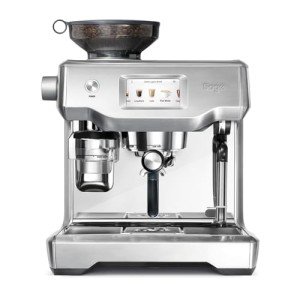Heat Exchange Espresso Machines: A Comprehensive Guide
Espresso machines have evolved considerably over the years, catering to the requirements of home baristas and coffee experts alike. Amongst these machines, heat exchange espresso machines have actually gained popularity due to their capability to provide constant performance and exceptional brew quality. In this post, we will explore the workings, advantages, and essential functions of heat exchange espresso machines, supplying a thorough understanding for both potential purchasers and coffee enthusiasts.
Understanding Heat Exchange Technology
Heat exchange espresso machines run on an unique principle that allows simultaneous water heating for developing and steaming. They are geared up with a single boiler that utilizes a heat exchanger system. This feature is considerable as it makes it possible for users to brew espresso while steaming milk concurrently, promoting performance in the coffee-making procedure.
How Does a Heat Exchange Espresso Machine Work?
The procedure begins with the machine's water inlet filling the boiler. As the water warms up, it turns to steam. The ingenious heat exchanger uses hot steam to heat additional water in a separate passage designed specifically for the brew group. This means that water can reach the perfect brewing temperature without waiting for the boiler to change. The key steps include:
- Water Fill: Water is drawn into the boiler.
- Heating Process: The boiler warms up as water is transformed into steam.
- Heat Exchange: Steam heats water in the heat exchanger tube.
- Developing: Water from the heat exchanger is pressed through coffee grounds, extracting the tastes needed for an abundant espresso.
This process permits for quick temperature level modifications and enhanced coffee extraction.
Benefits of Heat Exchange Espresso Machines
Heat exchange espresso machines use several benefits, particularly for those aiming to optimize their coffee experience. Here are some essential benefits:
- Simultaneous Brewing and Steaming: Users can brew espresso while steaming milk, making it ideal for hectic cafes and home baristas who value performance.
- Temperature level Stability: The boiler's steam pressure assists maintain a steady temperature, which is vital for consistent espresso extraction.
- Versatility: The design enables for fast switching between developing and steaming, making it much easier to create numerous coffee drinks, from lattes to coffees.
- User-friendly: Models typically come with available controls, making it practical for both beginners and knowledgeable baristas to produce quality drinks.
- Professional Quality: Heat exchange machines are frequently utilized in commercial settings, supplying users with high-quality developing efficiency in your home.
Key Features to Look for in Heat Exchange Espresso Machines
When considering the purchase of a heat exchange espresso machine, there are several features that one need to take into consideration:
- Build Quality: Look for machines made of long lasting products, such as stainless-steel or brass, making sure durability.
- Boiler Size: A larger boiler will hold more water and sustain greater output with time.
- PID Temperature Control: This feature assists keep consistent brew temperatures, which can enhance the coffee-making process.
- Group Head Design: Machines with a saturated or semi-saturated group head provide much better temperature level stability.
- Reduce of Use: User-friendly interfaces and intuitive controls enhance the overall experience for baristas at all ability levels.
- Steam Wand Quality: An excellent steam wand with proper insulation and versatility permits for much better texturing of milk.
- Water Reservoir Size: Depending on your requirements, consider how typically you wish to refill the water reservoir.
Comparison of Popular Heat Exchange Espresso Machines
To much better understand the choices offered in the market, listed below is a comparison table of some popular heat exchange espresso machines:
| Machine Model | Boiler Size | PID Control | Rate Range | User Ratings |
|---|---|---|---|---|
| Profitec Pro 700 | 2.0 L | Yes | ₤ 2,000-₤ 2,500 | 9.5/ 10 |
| Rocket Espresso R58 | 1.8 L | Yes | ₤ 2,400-₤ 2,800 | 9.4/ 10 |
| Elekta Bianca | 1.8 L | Yes | ₤ 2,500-₤ 3,000 | 9.6/ 10 |
| La Spaziale S1 Vivaldi II | 1.5 L | Yes | ₤ 1,800-₤ 2,200 | 9.2/ 10 |
| Bezzera Magica | 1.2 L | No | ₤ 1,600-₤ 1,800 | 9.0/ 10 |
FAQs About Heat Exchange Espresso Machines
What is the main difference in between a heat exchange and a dual boiler espresso machine?
While both types can brew espresso and steam milk at the exact same time, dual boiler machines have different boilers for brewing and steaming. In contrast, heat exchange machines use a single boiler and a heat exchanger to attain the same function.
Are heat exchange machines suitable for novices?
Yes! Numerous heat exchange machines are created with user-friendly features, making them accessible for newbies. With appropriate guidance and practice, users can rapidly produce quality espresso.
What sort of maintenance do heat exchange espresso machines need?
Routine upkeep includes descaling, cleaning up the boiler, inspecting seals and gaskets, and keeping the group head clean. Steam Espresso Machines ensures longevity and consistent efficiency.
Can I use a heat exchange machine for different types of coffee beverages?
Absolutely! Heat exchange machines allow users to create a variety of coffee beverages, including espresso, lattes, cappuccinos, and more.
Heat exchange espresso machines represent a blend of innovation and custom, offering coffee enthusiasts with the tools required for crafting the best cup. Their capability to all at once brew and steam, integrated with precise temperature level control, makes them a compelling choice for both home baristas and specialists. With the best understanding on features and maintenance, users can open a world of splendid coffee experiences, ensuring that each sip is as delightful as the last.

